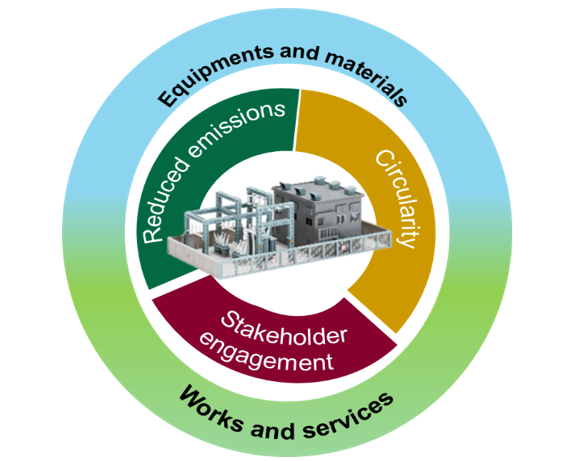Video Article Open Access
Enel’s New Materials Global Approach towards Grid Futurability
Massimo Bartolucci*, Lourdes Garcia Duarte, Marina Lombardi, Ricardo Perez, Bettina Mirabile
Enel, Rome 00185, Italy
Vid. Proc. Adv. Mater., Volume 3, Article ID 2206291 (2022)
DOI: 10.5185/vpoam.2022.06291
Publication Date (Web): 12 Sep 2022
Copyright © IAAM
Graphical Abstract

Abstract
The electrical grid is the infrastructure that enables the energy transition, interconnecting renewable generation and final consumers. The necessity to connect distributed renewable sources brought new complex problems to be solved in terms of dispatching an increasing amount of electricity from renewable sources, managing the increased consumption of our customers, as well as the growing number of types of electrical players connected to the grid, guaranteeing the full reliability of the electricity service aiming to eliminate interruptions (SAIDI “0”). Enel has called this roadmap Grid Futurability. We truly believe that the success of this energy transition passes from the cooperation of all the energy stakeholders, a long-term strategy and sharing of investment plans, and the adoption of innovative sustainable solutions. In order to prepare our journey towards the net-zero target based on these principles, last year we launched the project Grid Futurability.
Among the main goals is to reduce the energy footprint of the network thanks to the adoption of circular and sustainable approaches starting from the design phase, pushing to the procurement of recycled materials to the re-entry of waste materials into the manufacturing cycles. Considerable efforts must be spent in driving the whole electricity sector from the use of long-time consolidated materials, such as virgin raw copper and aluminium, steel, iron, concrete but also polyethylene, resins etc. to assess alternatives in order to reduce carbon footprint and virgin raw material consumption. The electrical grid is a ‘mine of materials’ that, suitably regenerated, can be used as inputs for the production of new assets or new products in other productive value chains. In that sense, Enel is adopting a “grid mining” approach and the entire value chain of grid assets is being analysed with a view to improving long-term value creation and incorporating the “Circular by design” principle right from the asset design stage. Enel is acting as a major promoter and a large-scale enabling factor of advanced research towards innovative technologies, where material technology, innovation and research are the enabling factors.
In this sense Enel is directly targeting the core of the electrical network business:
- forcing the electrical equipment market to adopt secondary raw materials as copper, aluminium & steel and giving strict rules to measure the impacts results and benefits, also contributing to the development of the international standardization for the Product category Rules;
- promoting the transition towards SF6 free equipment, moving the market to achieve economies of scale, and the related research toward new gases which could achieve same performances even though at drastically reduced GWP;
- testing and adopting as construction material for line poles and substation buildings new meshes of concrete with high percentages of recycled content with lower emissions footprint, and water consumption;
- using extensively, for the very first time in such a large scale, natural oil rather than mineral as insulating medium for distribution transformers, improving performance, security and environmental impact;
- reserving large lots in purchasing tenders for cables with recycled contents in the jackets and natural materials in the outer sheath;
- challenging the market and promoting the extensive use of recycled fiberglass in street cabinets to be adopted as base solution for LV distribution grid;
- designing and testing digital dashboards at project level, for measuring and disclose environmental and social impact, fostering the use of second-hand raw material in grid assets, and tracking the waste disposal process, aimed to maximizing value creation and explore new business models.
- finally, but not least, completely reinventing and redesigning the smart meter achieving a nearly 100% recycled/recyclable device (both the case and the inner components)
The above initiatives are being designed and adopted in a continuous open innovation process where those listed are consolidating and expanding and others are already in pipeline.
Keywords
Energy transition; grid futurability; grid mining; circular economy.
Biography
Massimo Bartolucci, master degree in electronic engineering, joined Enel since 1989. Head of new materials and components competence center in Innovation Department of Global Infrastructure and Networks Division of Enel. Wide experience in regional areas grid management as well as deep knowledge of network components, tool, devices and working practices. IEC member since 2011, chair of Technical Committee 78 in Italian National Committee for standardization, he participates in several working groups related to the delivery of international standards on components, PPEs and related testing methods.
Video Proceedings of Advanced Materials

Upcoming Congress



